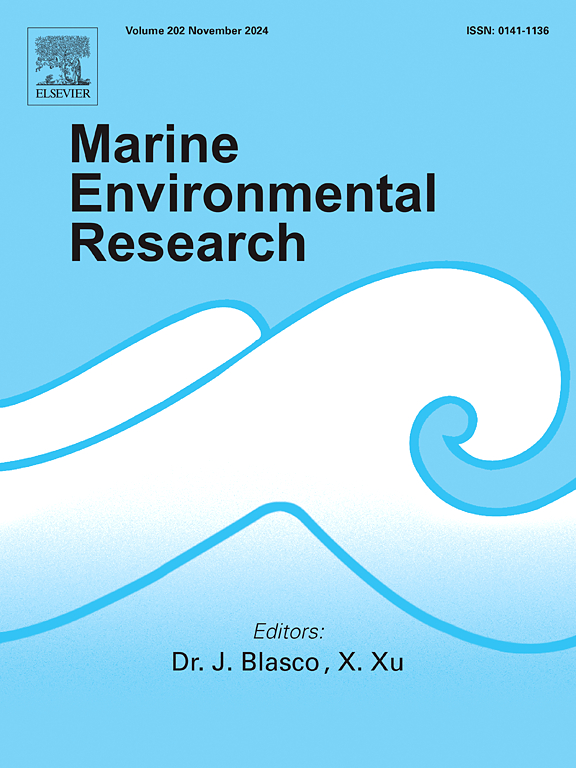Idiosyncratic patterns of chlorophyll-a anomalies in response to marine heatwaves in the Adriatic Sea (Mediterranean Sea) over the last two decades
IF 3
3区 环境科学与生态学
Q2 ENVIRONMENTAL SCIENCES
引用次数: 0
Abstract
In the open ocean, marine heatwaves (MHWs) have been associated to a decline of Chlorophyll-a (Chl-a) concentration in tropical and temperate areas while, at higher latitudes, they seem to enhance phytoplankton productivity. Currently, uncertainties remain on the outcomes of MHWs on primary production in coastal and heterogenous marine regions. We analyzed long-term modeled satellite-derived data on sea surface temperature and Chl-a concentration in the Adriatic Sea (Mediterranean Sea), a semi-enclosed basin where coastal and open-sea environmental conditions co-occur, to explore Chl-a responses to MHWs.
We found that both low and high Chl-a anomalies were strictly dependent on MHWs, although following direct or inverse relationships in different areas, as a consequence of regional-scale heterogeneities in nutrient availability, riverine inputs, circulation and geomorphology. Along the west coast and shallow areas of the North and Central Adriatic, high MHWs frequency, duration and intensity corresponded to high frequency of Chl-a peaks and/or increased intensity and duration of low Chl-a anomalies, suggesting pronounced fluctuations with intense phytoplankton blooms alternating to extremely low production events. Conversely, in offshore and deeper areas, especially in the South Adriatic, MHWs frequency, duration and intensity inversely correlated with Chl-a anomalies, indicating a possible reduction of phytoplankton biomass and a decline of organic matter flow towards the sea floor. Prolonged MHWs may therefore drive shifts in primary production with possible ecosystem-wide effects in both coastal and pelagic areas. These multifaceted MHW-Chl-a interactions observed in the Adriatic Sea emphasize the need for context-specific assessments in environmentally complex marine regions to develop management strategies addressing ecological and socioeconomic issues arising from the unrelenting increase of temperature anomalies.
求助全文
约1分钟内获得全文
求助全文
来源期刊

Marine environmental research
环境科学-毒理学
CiteScore
5.90
自引率
3.00%
发文量
217
审稿时长
46 days
期刊介绍:
Marine Environmental Research publishes original research papers on chemical, physical, and biological interactions in the oceans and coastal waters. The journal serves as a forum for new information on biology, chemistry, and toxicology and syntheses that advance understanding of marine environmental processes.
Submission of multidisciplinary studies is encouraged. Studies that utilize experimental approaches to clarify the roles of anthropogenic and natural causes of changes in marine ecosystems are especially welcome, as are those studies that represent new developments of a theoretical or conceptual aspect of marine science. All papers published in this journal are reviewed by qualified peers prior to acceptance and publication. Examples of topics considered to be appropriate for the journal include, but are not limited to, the following:
– The extent, persistence, and consequences of change and the recovery from such change in natural marine systems
– The biochemical, physiological, and ecological consequences of contaminants to marine organisms and ecosystems
– The biogeochemistry of naturally occurring and anthropogenic substances
– Models that describe and predict the above processes
– Monitoring studies, to the extent that their results provide new information on functional processes
– Methodological papers describing improved quantitative techniques for the marine sciences.
 求助内容:
求助内容: 应助结果提醒方式:
应助结果提醒方式:


